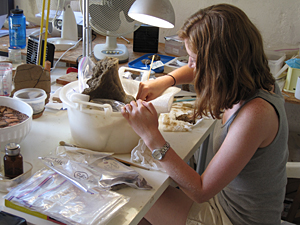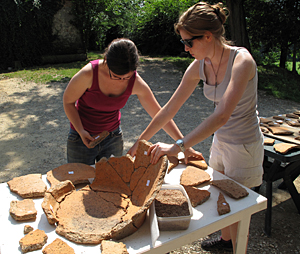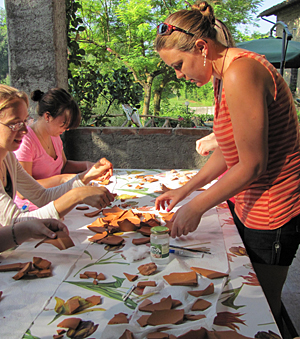


ADVERTISEMENT
- UD grad students help preserve cultural heritage across U.S., around globe
- LeeAnn Barnes Gordon: Agora Excavations, Athens, Greece
- Lauren Bradley: Walters Art Museum, Baltimore
- Alisha Chipman: Paul Messier, LLC
- Rose Daly: Nasher Sculpture Center, Dallas
- Emily MacDonald-Korth and Carlos Moya: Fengguo Temple, Yixian, China
- Amanda Maloney: C.C. von Waldthausen Fotorestauratie Atelier, Amsterdam
- Gwen Manthey: Western Center for the Conservation of Fine Arts, Denver
- Carrie Roberts: English Heritage, London
- Kirsten Travers: Stichting Restauratie Atelier Limburg, the Netherlands
- Renee Wolcott: Smithsonian National Portrait Gallery
- Erin A. Anderson: Poggio Colla, Mugello Valley of Tuscany
- Tatiana Cole: Metropolitan Museum of Art
- Anne Getts: Philadelphia Museum of Art
- Sarah Gowen and Stephanie Oman: Shangri La, Honolulu, Hawaii
- Allison Holcomb: Colonial Williamsburg, Williamsburg, Va.
- Ellen Moody: Sherman Fairchild Center, Metropolitan Museum of Art
- Steve O'Banion: Smithsonian American Art Museum, Lunder Conservation Center
- Ellen Promise: Philadelphia Museum of Art
11:51 a.m., July 28, 2010----This summer I am working in the conservation lab at the archaeological site of Poggio Colla in the Mugello Valley of Tuscany, Italy. Poggio Colla has been annually excavated for the past 17 seasons by Southern Methodist University, Franklin and Marshall College and the University of Pennsylvania Museum.
The site is an active field school where students learn the techniques of archaeological excavation. Additionally, conservation activities, illustration, zooarchaeology, cataloguing and research are carried out at two lab facilities.
Poggio Colla is an Etruscan settlement site with habitation dating from the 7th century to the 2nd century BCE. It is also believed that the site may have functioned as a sanctuary for ritual purposes during the later period.
As an intern in the conservation lab, I work with one other graduate intern, Nicole Ledoux, from the UCLA/Getty Conservation Program, and supervising conservators Ariel O'Connor and Allison Lewis. In the lab, we examine and document the finds before cleaning and stabilizing them so that they can be safely handled and studied by archaeologists and students. We have also been working on rehousing some of the important bronze finds from past seasons.
This season, five new trenches have been opened and the finds so far are predominantly ceramics, bronze, iron and bone. I am working on cleaning and excavating the interior of a large impasto holmos, a large ceramic base for a vessel. After cleaning is completed, I will be stabilizing cracks and joining fragments to reconstruct the remaining portions.
Since the site is an active field school, we have given tours of the lab to current students and taught them about the field of conservation and the differences between archaeological site work and museum work. We gave a conservation workshop on methods of ceramic reconstruction where they learned to reassemble broken ceramics using facsimile terracotta pots and conservation adhesives.
It has been a wonderful experience to work hands-on with such a variety of archaeological materials and to collaborate with specialists from many fields. I have enjoyed sharing our work in the conservation lab with other students and staff. Additionally, working in Italy has given me the opportunity to travel to museums and archaeological sites to compare conservation methods with those I have been studying at the Winterthur/University of Delaware Program in Art Conservation.


